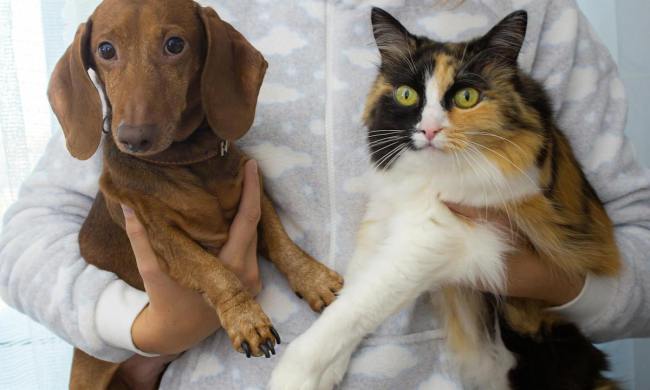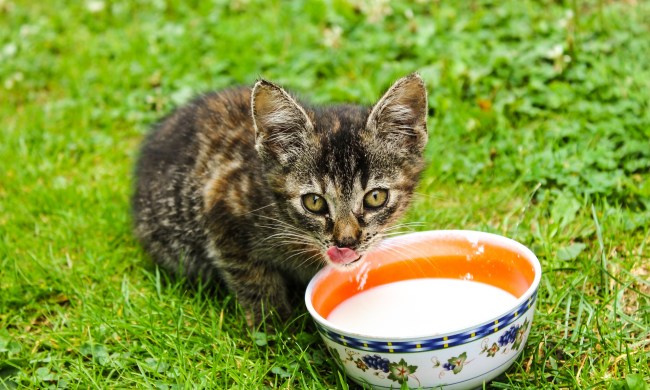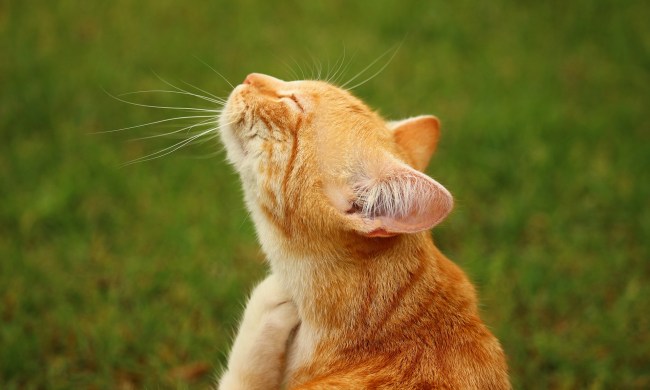Cats can get the reputation of being perpetually grumpy and unloving. These are myths — cats can be playful and remain affectionate even after the kitten stage.
Yet, cats — like humans — experience various emotions, including anger. Even the cuddliest, most mild-mannered kitties have their triggers and moments. Unlike humans, cats can’t tell you how they feel using words. Though cats can vocalize — and often will when angry — watching body language will provide the most clues into what your cat thinks about their current situation.
Honing your inner cat whisperer can go a long way in preventing injury and heartache. Here are signs you’ve got an angry cat on your hands and what to do.
What makes a cat angry?

Cats are unique. Different cats will have different triggers. For instance, one cat may enjoy being pet on their bellies (rare), while another may have a two-minute time limit for touching. Getting to know your cat and what makes them happy and angry is important. However, some common triggers of anger in cat include:
- Overstimulation, such as from too much petting
- Pain or illness
- Fear, such as of a new pet or a loud noise
- Territory violation, like another animal using their litter box or someone sitting in their favorite spot on the couch
- Frustration leading to redirected aggression (when cats cannot get to whatever is making them upset, like a stray in the yard, they may redirect their anger at someone or something in the home)
- Hormones, especially when females are in heat
- Threat to kittens (maternal aggression)
Signs your cat is angry

An angry cat often displays subtle body language clues when they’re merely “frustrated.” Left unnoticed, the behavior can escalate to more telltale signs of an angry cat, like pouncing, biting, or hissing. These behaviors can cause injury to the cat and other humans or animals in the home. They can also be characterized as “aggression” and lead to surrender. These early-stage and late-stage clues will help you figure out where your feline’s feelings are on a scale of 1 to 100.
Early signs of an angry cat
An angry cat may have started getting annoyed and gone from there. Recognizing the early clues can help you reverse course before molehills turn into mountains.
- Flicking tail. A cat will start flicking their tail up and down or side to side if they start to get frustrated or annoyed.
- Dilated pupils. The eyes are a window to a cat’s emotional state. Cats’ pupils get larger when they’re in a heightened state.
- Curled tail. This one is especially common when a cat is scared. They may curl their tail underneath their crouched body to “hide” from the trigger.
- Direct stare. If your cat is glaring at you or another trigger, take note. The dirty look may not be in your head.
- Flat, stiff, and pulled-back ears. Cats often cop “airplane” wings when they feel threatened, and removing whatever is annoying them ASAP can prevent them from taking flight (pouncing).
- “Halloween cat” mode. This posture can be a bridge between a frustrated and an angry cat. The posture involves an arched back, pushy tail, and fur standing up (hackles).
Later signs of angry cats
Some pets will be so upset or scared by a trigger that they immediately go into angry cat mode. Other times, they will have been dropping the earlier hints for a while. Either way, these are signs your cat has had it:
- Vocalizations. Growling and hissing are warning signs your cat is mad.
- Pouncing. An angry cat might take matters into their own paws by pouncing on the trigger (or redirecting their anger toward someone if they can’t get to whatever upset them).
- Swiping and scratching. Cats will take these steps with their claws out to protect themselves.
- Biting. Like toddlers, dogs, and other animals, cats bite when they’re upset to protect themselves and send a message.
What to do if your cat is angry

If your cat shows signs of anger and frustration, you’ll want to take a few steps to protect yourself (and get back on their good side).
- Back off or remove the trigger. Eliminating the trigger, such as ending a cuddle session your cat isn’t into, can let tempers cool before they escalate.
- Avoid yelling. Don’t respond to an angry cat with more anger, especially if the pet is already scared.
- Don’t break up fights. Avoid getting in the middle of two animals fighting. You could get hurt. Instead, try banging pots and pans (or yelling — this one is an exception to the rule).
- Call the vet. Cats may seem angry when they are in pain or sick. A check-up may be in order.
- Work with a behaviorist. Professionals can help you pinpoint triggers and more personalized solutions to help your cat chill out.
Closing thoughts

Cats aren’t angry all the time, contrary to pop culture myths. However, all felines can experience anger. While cats can’t come out and tell you what they think using words, they do show signs of anger through body language and vocalization. Recognizing early signs a cat is angry, such as dilated pupils and tail flicking, can help you back off quickly (or remove whatever is enraging a cat, like an overzealous toddler).
Sometimes, a cat will immediately take more aggressive tactics. Other times, unnoticed or ignored early signs of anger will escalate, and a cat will bite, pounce, or scratch. Call the vet if your cat suddenly displays angry behavior consistently and without cause. The cat may have an underlying condition. Your pet’s vet can also refer you to a behaviorist for customized help.




